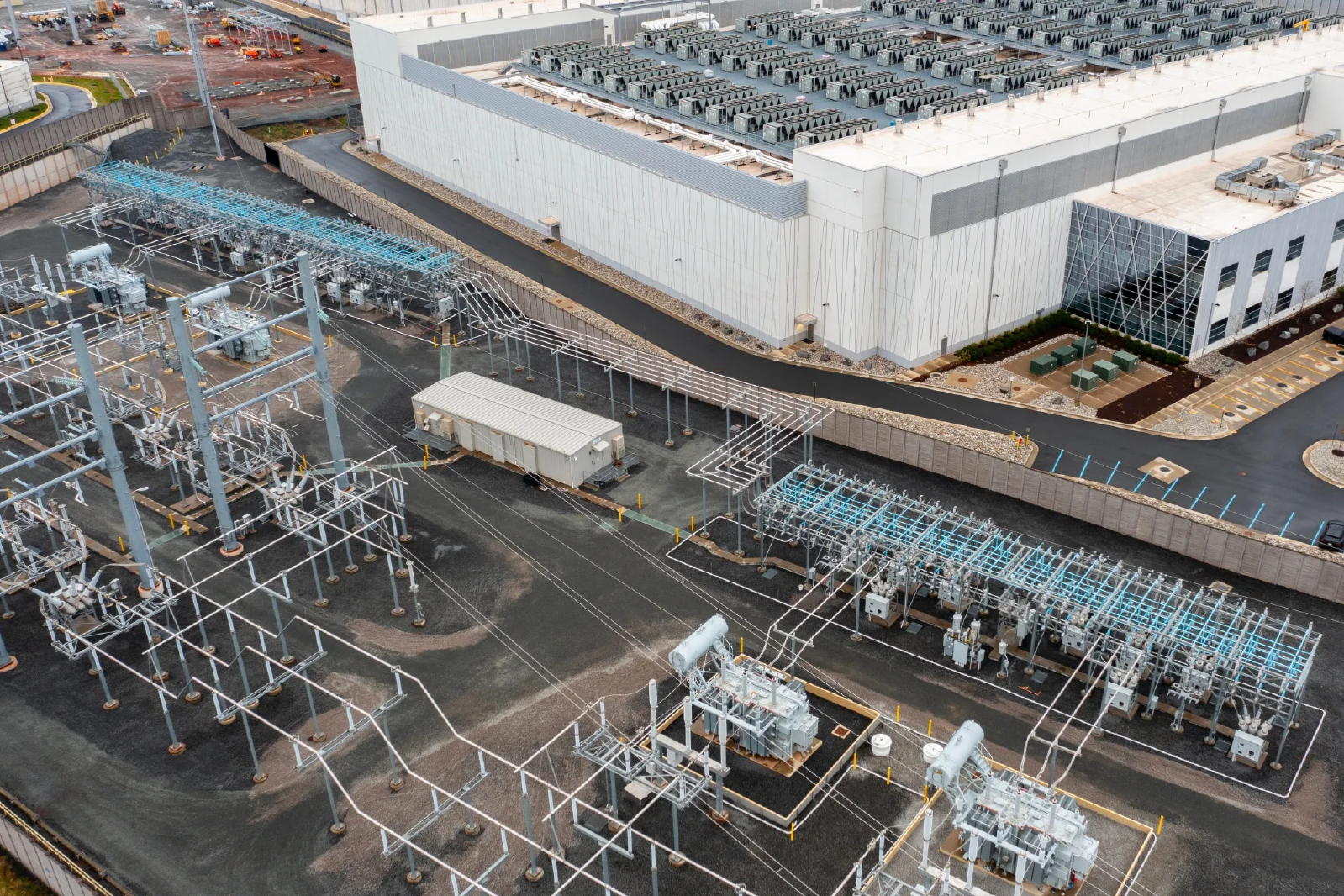The Canadian data center market is modest compared to its neighbours south of the border, however, demand for new colocation, edge, and hyperscale centers is exploding.
The question is, can market entrants procure adequate supply given the constraints such as power allocation, fiber connectivity, land costs, development timelines, competition, and other regulations?
Many data center projects have been announced in Ontario since 2022, typically involving facilities under 15 MW in the Greater Toronto Area and surrounding regions. These announcements have highlighted potential economic benefits, including construction employment and long-term tax revenue.
As of today, Canada has approximately 110 colocation data centers; 35 of which are in the GTA at an operational capacity of about 312MW. That said, progress on new projects has been slower than initially indicated. The primary constraint is not capital availability, land acquisition, or operator demand, but rather the time and cost required to secure firm transmission capacity and complete grid connections.
This is why, in addition to a construction pipeline of around 236 MW, there have been ongoing mergers, acquisitions, and buyouts of existing inventory. And despite this big push, it is not uncommon to see single data centers in the US with far larger capacities than the entire GTA combined.
Ontario’s electricity demand is increasing at a higher rate than previously forecast, driven by transportation and building electrification, industrial expansion, and proposed large-load additions such as data centers. The Independent Electricity System Operator (IESO) projects a system-level net annual demand to grow by 75% to 262 TWh by 2050; or approximately 2.2% per year. The province is looking to meet this demand, however, most new supply additions—primarily nuclear refurbishments and new natural-gas generation—are scheduled for 2028 or later.
As a result, transmission capacity in load centers near the GTA is effectively running thin, pending expansion of supply-side resources, for the remainder of the decade. Data center projects therefore enter a multi-year queue for system impact studies, line upgrades, and new substations.
That’s why, for this newsletter, we’ll examine several specific aspects of the current electricity connection process that are affecting project timelines and viability in Ontario.
Electricity Connection Challenges in Ontario
- Demand growth outpacing near-term supply The IESO’s 2024 Annual Planning Outlook and subsequent updates indicate that summer peak demand will exceed existing dependable capacity plus committed resources by approximately 2,500 MW as early as 2028 under median weather and economic assumptions. Data center loads, which typically exhibit high coincidence with system peak due to 24/7 operation and limited demand-response capability, consume headroom that would otherwise support broader electrification objectives. Until new supply enters service, every approved megawatt for a commercial data center is effectively offset elsewhere in the province. According to the IESO 2025 Annual Planning Outlook, “commercial data centre sub-sector level specific net annual energy demand is projected to grow from 3 TWh in 2026 to 16 TWh in 2050, a difference of 13 TWh, or 423 per cent in 24 years, with a compound annual growth rate of 7.1 per cent.” For context, “industrial sector level net annual energy demand is projected to grow from 44 TWh in 2026 to 73 TWh in 2050, a difference of 28 TWh, or 64 per cent in 24 years, with a compound annual growth rate of 2.1 per cent.”

Source: Bloomberg.
- Extended transmission-connection timelines Ontario does not use a formal numbered interconnection queue for load projects. Instead, large transmission-connected loads enter the Connection Assessment and Approval (CAA) process, with active proposals listed on the IESO’s public Application Status page. Numerous data center and other large-load projects are currently in assessment. For projects requiring significant new reinforcements—common in the Greater Toronto Area—System Impact Assessments and subsequent upgrades typically require several years. The IESO’s standard CAA timeline for complex assessments is 11–13 months to conditional approval, after which contributor-funded transmission work (often multiple additional years) is required before energization. Total lead times for loads exceeding 100 MW in constrained areas can stretch to several years, considerably longer than timelines observed in many U.S. jurisdictions.
- Material upstream network upgrade costs For large transmission-connected loads in constrained areas of the Greater Toronto Area, Hydro One recovers most, if not all, of the cost of required upstream network reinforcements (reconductoring, new transformation, reactive support, etc.) from the connecting customer via a capital contribution. These contributions are determined in the Customer Impact Assessment (CIA) phase and can be substantial, often reaching nine figures for multi-hundred-megawatt greenfield projects. The contribution is normally payable upfront or secured before detailed design and construction proceed, adding materially to total project costs.

Source: IESO.
- Policy and prioritization considerations Provincial direction and local municipal resolutions have emphasized priority for residential development, hospitals, schools, and existing Ontario industry when allocating limited transmission capacity. In June 2025, the government introduced Bill 40 (Protect Ontario by Securing Affordable Energy for Generations Act, 2025), which, if passed, would enable regulations allowing the Minister of Energy and Mines to prioritize or approve data centre connection requests based on provincial economic interests, while potentially imposing additional requirements on facilities that do not meet specified criteria.

Conclusion
Ontario continues to offer long-term advantages for data center location, including a cool climate, 99.98%+ historical reliability, proximity to transborder fiber routes, and a nuclear-heavy generation mix that will expand significantly post-2030. In the 2026–2030 window, however, transmission constraints and associated cost recovery will continue to delay or redirect the majority of announced hyperscale projects.
Subsequent issues will examine emerging mitigation strategies, including phased lower-power builds, on-site generation and storage hybridization, and the small number of municipalities that have pre-zoned and pre-serviced sites with available capacity.
For a confidential consultation or a complimentary opinion of value of your property please give us a call.
Until next week…
Goran Brelih and his team have been servicing Investors and Occupiers of Industrial properties in Toronto Central and Toronto North markets for the past 30 years.
Goran Brelih is an Executive Vice President for Cushman & Wakefield ULC in the Greater Toronto Area.
Over the past 30 years, he has been involved in the lease or sale of approximately 25.7 million square feet of industrial space, valued in excess of $1.6 billion dollars while averaging between 40 and 50 transactions per year and achieving the highest level of sales, from the President’s Round Table to Top Ten in GTA and the National Top Ten.
Specialties:
Industrial Real Estate Sales and Leasing, Investment Sales, Design-Build and Land Development
About Cushman & Wakefield ULC.
Cushman & Wakefield (NYSE: CWK) is a leading global real estate services firm that delivers exceptional value for real estate occupiers and owners. Cushman & Wakefield is among the largest real estate services firms with approximately 53,000 employees in 400 offices and 60 countries.
In 2020, the firm had revenue of $7.8 billion across core services of property, facilities and project management, leasing, capital markets, valuation and other services. To learn more, visit www.cushmanwakefield.com.
For more information on GTA Industrial Real Estate Market or to discuss how they can assist you with your real estate needs please contact Goran at 416-756-5456, email at goran.brelih@cushwake.com, or visit www.goranbrelih.com.
Connect with Me Here! – Goran Brelih’s Linkedin Profile: https://ca.linkedin.com/in/goranbrelih
Goran Brelih, SIOR
Executive Vice President, Broker
Cushman & Wakefield ULC, Brokerage.
www.cushmanwakefield.com
Office: 416-756-5456
Mobile: 416-458-4264
Mail: goran.brelih@cushwake.com
Website: www.goranbrelih.com


